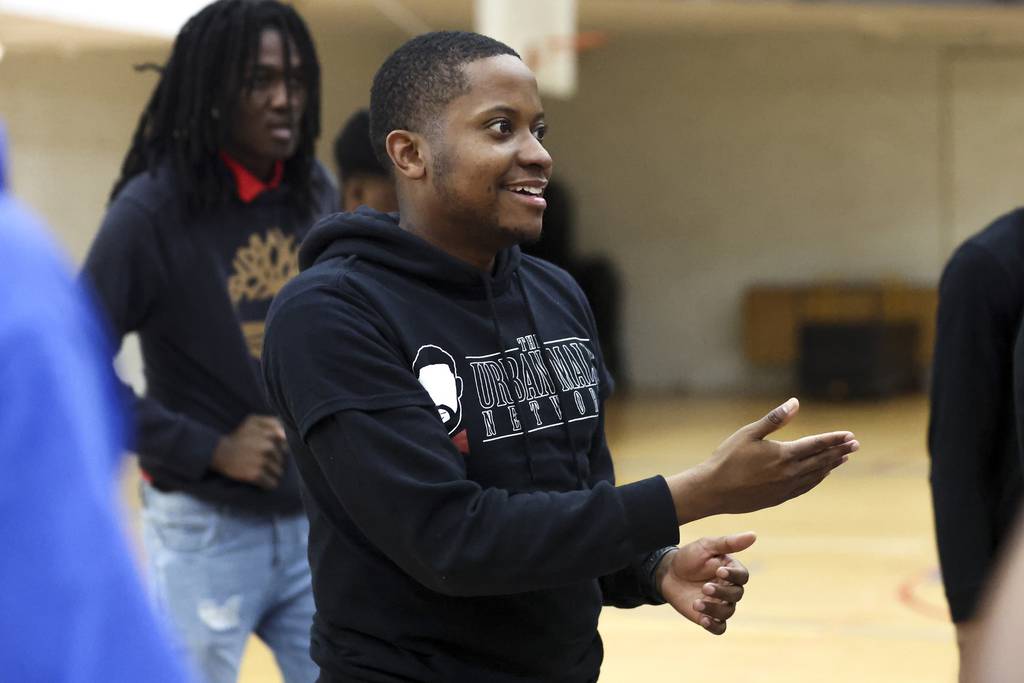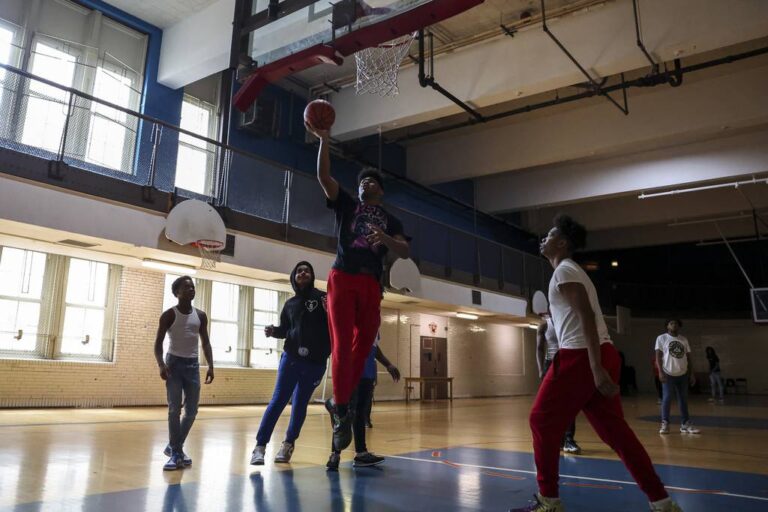In the past week, police, state and local leaders have grappled with the decadeslong question of how to control large youth gatherings downtown in wake of the violent crowd that swarmed near Millennium Park last weekend, and the spotlight for immediate answers could not have shone more brightly on Mayor-elect Brandon Johnson.
In response, Johnson, who was in Springfield the days following the weekend violence to court state lawmakers in his first visit to the capital since winning the election, touted a strategy he pledged on the campaign trail: more job opportunities for the city’s youth.
But is the solution really that simple?
Since at least the 1960s, politicians have championed jobs for the young as a way to curb crime, and the idea is just one part of Johnson’s overall plan, including investing in schools and public spaces. It’s a progressive approach that voters embraced over his tough-on-crime opponent, Paul Vallas, who was backed by the city’s Fraternal Order of Police.
The idea to hire more young people to deter crime might have started with Mayor Richard J. Daley, who in 1967 had “one of the first models of engaging inner-city gangs with jobs programs,” said Lance Williams, a professor at Northeastern Illinois University with 28 years of experience as a street gang interventionist and researcher. Daley’s federally funded job program worked to reform gang leaders.
If the city could convince the leader of a gang to buy into the jobs program, the rest of the gang would follow, he said.
“It was like cutting the head off of a snake, and then the body would die,” said Williams.
But much has changed, especially after the sweeping arrests of gang leaders in the ’70s and ’80s that left gangs splintered and unorganized, Williams said. Loyalty isn’t bound to the top, and social media can rapidly escalate conflict.
While politicians and community leaders have long touted job opportunities as somewhat of a panacea to crime, practicing what they preach has proven to be out of reach with these modern challenges, even as knowledge about trauma and street crime has increased through research and advocacy.
University of Michigan professor Sara Heller, who published a Department of Justice-funded 2017 report on summer jobs and their ability to reduce violence, said the people who are most involved in shootings are not the ones who are signing up for summer jobs programs.
“If you’re really, really disconnected, six weeks of a summer job is unlikely to change your behavior,” she said.
Instead, Heller stressed that programming should be available to help the most “at-risk youth.” The job market is built around excluding people with those experiences, she said.
Sam Castro, director of community violence intervention at the Institute for Nonviolence, agreed, saying that youth who have experienced various levels of trauma need extensive training and education before being introduced into the workforce.
“When you take a person off the street and put them into a job, you set them up for failure,” he said. “There’s some work that has to be done before they get into the workforce.”
Lakeidra Chavis, a staff writer for The Marshall Project, said that Chicago mayors have consistently promised jobs campaigns to reduce youth crime.
“Despite the prevalence of these issues, the rhetoric around politicians changed very little. Despite research, despite what community members or activists said — the rhetoric hasn’t changed,” Chavis said.
Williams, the son of a Chicago gang leader who has devoted his career to helping implement and research violence intervention programs in Chicago, said deep-rooted structural issues need to be solved, such as inequities in education, to address crime. But he believes Johnson has a strong grasp on what needs to be done in part because of his background as a public schoolteacher.
“The schoolhouse is a good place to see how behavior in a community plays out. You’ve got 30 kids, and you can see how their personalities play out,” Williams said. “You can see what type of personality is aggressive and gets pushed out of the school into the streets.”
In a statement to the Tribune, Johnson spokesperson Ronnie Reese said the mayor-elect plans to prioritize those most at risk by engaging government, community-based organizations and employers throughout the city. But he gave no specifics about funding allocation or which city programs he will prioritize.
“Chicago currently faces a youth unemployment rate of 19% for those 16 to 19 years old, and 12% for those 20 to 24 years old,” Reese said in the statement. “As a result, too many young Chicagoans feel there is nowhere to turn, and when there is nowhere to turn, they can act in ways that aren’t in their — or our city’s — best interest.”
Marlon Haywood, executive director of Urban Male Network, said that a few youth leaders are instigating the downtown meetups that are wreaking so much havoc.
He said instead of resorting to punitive measures, such as curfews and bag searches, the city should pay these youth leaders to provide activities to their peers.
This would engage them, instead of punishing them, said Haywood, who started the mentoring program for young men on the city’s West and South sides over 10 years ago. The weekly programs are held in nine locations to help minority men gain skills to become community leaders and enter the workforce with one-on-one mentoring sessions and group activities.
“If we can work with them, we can change that dynamic,” he said.

The idea of paying youth leaders was part of Daley’s model, according to Williams, who wrote about the subject in his book, “King David and Boss Daley: The Black Disciples, Mayor Daley, and Chicago on the Edge.”
Gang leaders, he said, were paid to recruit members into the job training program, which was funded by federal money funneled through The Woodlawn Organization, a group of residents, churches and community organizations formed to confront neighborhood issues.
In the spring of 1967, the organization received $927,000 from the Office of Equal Opportunity, , started by President Lyndon B. Johnson for his War on Poverty, to provide education and job training to the Blackstone Rangers and the Black Disciples.
Daley was skeptical about giving money directly to gang leaders, but it worked for a while, Williams said. The program was implemented at various sites in Woodlawn, but there was pressure on both groups to keep violence down in order to keep the money flowing.
A mistake they made was giving gang leaders financial incentives to increase enrollment in programs, he said. Disciple leader David Barksdale received a salary that would be more than $50,000 in today’s money, Williams wrote in his book.
“So because they were still active on the streets, not only did they recruit their members, but they also went out to the neighborhood and communities around them to intimidate other young men who were not gang affiliated to drop out of school, under threat, to sign up for their program,” Williams told the Tribune.
Although those deceptive recruiting practices by gang leaders led to the program’s eventual demise, the idea that youth leaders can be part of a solution has not gone away.
Tara Dabney, director of development and communications at Institute for Nonviolence Chicago, said it’s pertinent that efforts should go toward giving young adults agency — making them feel seen and empowered.
“Can we get outreach teams downtown to be the protective shield? Let’s have conversations with youth about what they want,” she told the Tribune.
“It’s important that the public sector as a whole understands that workforce programs developed for this population are by design different from traditional workforce programs,” Dabney said. “We need to think critically about the way we spend our money and the way we are allocating our money.”
Williams stressed outreach teams should be sourced from groups throughout the city already doing violence prevention. They understand the youth, and may even know some of them. They “speak the language of the streets,” he said.
Latrayveon Borrow, an 18-year-old mentee at Urban Male Network, said his older brother died a few years ago from gun violence.
He said with Haywood’s help at UMN, he was able to connect with After School Matters to work summer jobs in high school. He’s graduating this spring and attending Illinois State University, where he hopes to major in accounting with a minor in mechanical engineering or architecture.
“Marlon brings in topics that we don’t normally talk about. It brings us together because we can all relate to each other. We all feel the same,” said Borrow. “We talk about gun violence. Even though that’s a common topic, but with us as teenagers we don’t talk about it as much as we should.”
“If we had a bunch of people doing what Marvin is doing, it would save so many lives,” he said. t
Chicago Tribune’s Alice Yin contributed.






